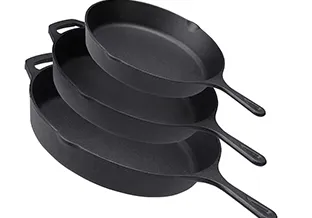
enamel cast iron vs cast iron
Enamel Cast Iron vs. Cast Iron A Comprehensive Comparison
Cast iron cookware has been a staple in kitchens for centuries, known for its exceptional heat retention and even cooking properties. In recent years, enamel cast iron has emerged as a popular alternative, offering additional benefits that cater to modern culinary needs. This article will explore the differences between traditional cast iron and enamel cast iron, helping cooks decide which option is best for their kitchen.
Traditional Cast Iron
Traditional cast iron cookware is made from a blend of iron, carbon, and silicon, which is cast into various shapes, including skillets, dutch ovens, and griddles. The allure of cast iron lies in its durability and versatility. It can withstand high temperatures, making it suitable for frying, baking, and even grilling. Moreover, when properly seasoned, traditional cast iron develops a natural non-stick surface, enhancing its cooking capabilities.
However, traditional cast iron has its drawbacks. It requires regular maintenance to prevent rusting and to keep its seasoning intact. This includes frequent oiling and sometimes a lengthy seasoning process after washing. Additionally, its heavy weight can be cumbersome for some users, and the porous surface can absorb flavors and smells from previous meals, which might be undesirable for certain dishes.
Enamel Cast Iron
enamel cast iron vs cast iron

Enamel cast iron is essentially cast iron cookware coated with a layer of enamel. This enamel coating provides a host of advantages. Firstly, it eliminates the need for seasoning, as the smooth surface is non-reactive and easy to clean. Foods do not stick as easily to enamel cast iron, and it is safe to use with acidic ingredients, such as tomatoes and vinegar, which can sometimes be a concern with traditional cast iron.
Another significant benefit of enamel cast iron is its aesthetic appeal. Available in a range of vibrant colors, enamel cookware can seamlessly transition from the kitchen to the dining table, serving as a beautiful serving dish. Additionally, enamel cast iron is typically lighter than traditional cast iron, making it easier to handle, especially for those who may struggle with the weight of traditional pieces.
However, there are downsides to enamel cast iron. While the enamel surface is durable, it can chip or crack if mishandled. Furthermore, enamel cast iron often comes at a higher price point than its traditional counterpart, which can be a deterrent for budget-conscious cooks.
Conclusion
Ultimately, the choice between enamel cast iron and traditional cast iron comes down to personal preference and cooking style. Traditional cast iron is ideal for those who appreciate the ritual of seasoning their cookware and desire its unparalleled heat retention for tasks like frying and searing. In contrast, enamel cast iron appeals to those seeking a low-maintenance, visually attractive option that works well for a variety of cooking methods without the concern of reacting with acidic ingredients.
Both types of cookware can coexist in a well-equipped kitchen, offering unique advantages that cater to different culinary needs. By understanding the strengths and weaknesses of each, home cooks can make an informed decision that enhances their cooking experience and helps them create delicious meals for their family and friends.
-
Cast Iron Cookware Pancake Pan- ZD Cookware|Non-Stick, Even Heat, DurableNewsAug.02,2025
-
Cast Iron Cookware- Baixiang County Zhongda Machinery|Non-Stick, Heat RetentionNewsAug.02,2025
-
High Quality Kitchen Durable Black Round Cast Iron Cookware Pancake Crepe Pan With Wooden Handle|Non-Stick Surface&Heat RetentionNewsAug.02,2025
-
Authentic Traditional Chinese Wok for High-Performance CookingNewsAug.02,2025
-
Season Cast Iron Perfectly with GPT-4 Turbo TipsNewsAug.01,2025
-
High Quality Cast Iron Cookware - Baixiang County Zhongda MachineryNewsAug.01,2025


